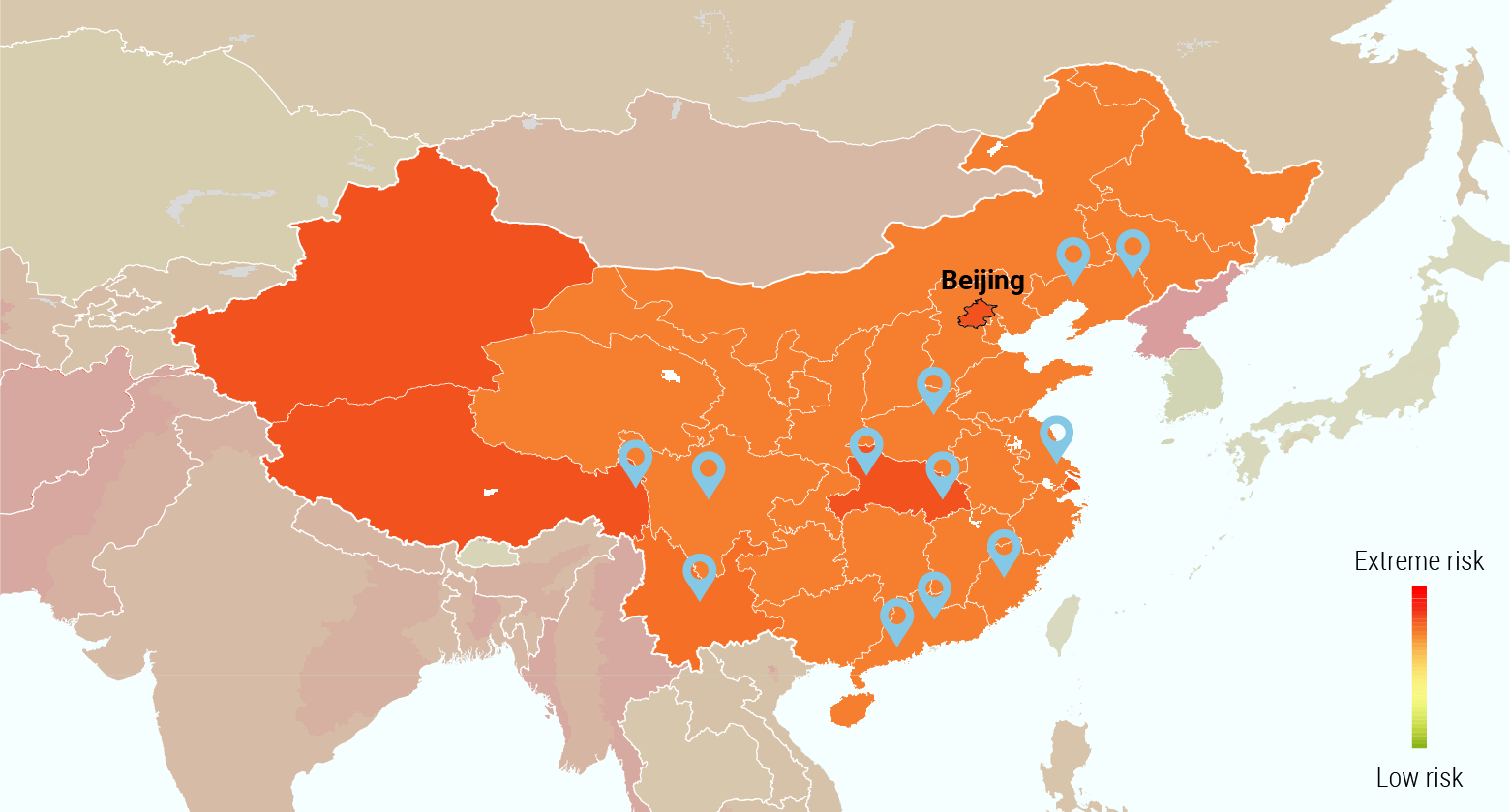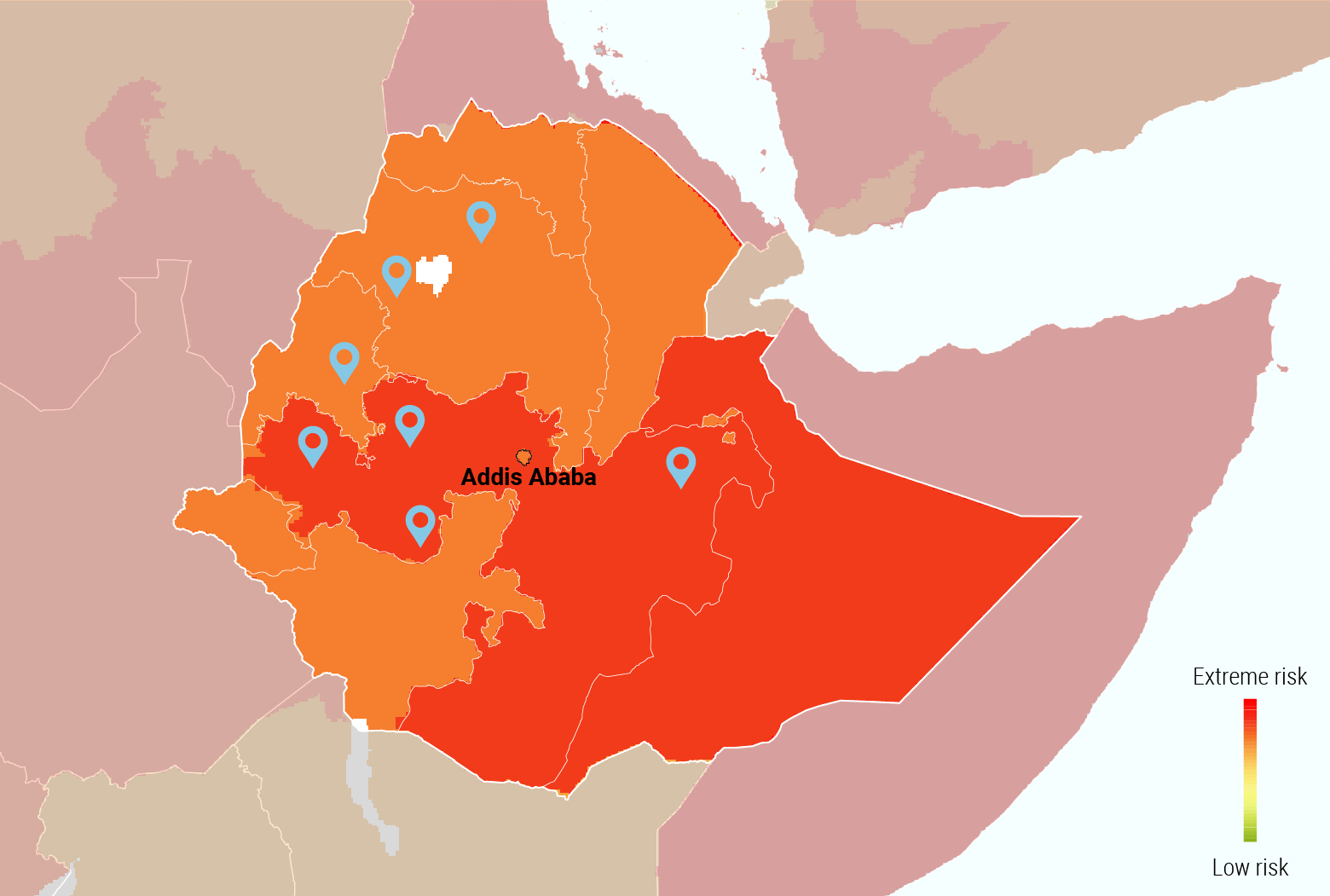Verisk Maplecroft releases world’s first subnational human rights risk indices
New data maps risk exposure across 3600 regions and 10 issues
After two years in development, we are delighted to announce the release of the world’s only Subnational Human Rights Dataset to enable multinational organisations and financial institutions to undertake risk assessments of their global operations, supply chains and investments in more granular detail than has been possible to date.
The Dataset, which encompasses risk scores for 3,600 states and administrative regions in 198 countries, can be used by companies and asset managers to accurately map their exposure to 10 key human rights issues:
- Arbitrary Arrest and Detention
- Child Labour
- Extrajudicial or Unlawful Killings
- Forced Labour
- Freedom of Assembly
- Kidnappings
- Migrant Workers
- Occupational Health and Safety
- Security Forces and Human Rights
- Torture and Other Ill-treatment
“This data is unique, as there is nothing else similar in the marketplace that can match its comprehension of a wide degree of human rights issues on such a large scale,” says Matt Moshiri, President of Verisk Maplecroft. “In a time where greater emphasis is being placed on the social element of ESG (environmental, social and governance) risks by investors and consumers alike, it will provide the more refined intelligence companies need to take the assessment of human rights to a new level.”
Read more on conducting Human rights due diligence
Dynamic human rights monitoring captures local-level risks for 198 countries
The indices bring together data science with expert derived judgements and existing methodologies from our internationally recognised country-level human rights indices.
‘Events gathering’ of reported violations or issues related to a specific human right is a key component. The benefit of this approach is that we are able to more accurately capture the situation as reported ‘on the ground’ as well as being able to swiftly react to any major event, including conflicts, protests, riots or any other severe human rights infringements. Furthermore, using a dynamic event gathering approach means the indices will be updated quarterly to provide up-to-date metrics for each of the 3,600 regions.
With the human rights situation not only varying between countries, but also between the administrative areas, such a view is particularly beneficial for organisations with global footprints, multinational supply chains or diversified investment portfolios.
Fine-tuning human rights risk assessments
The indices provide an important risk assessment tool for a range of functions, including for the sustainable procurement departments of global brands that may be worried about the use of child labour or forced labour in the creation of their company’s products. These organisations may have 10,000 suppliers from 120 countries, but a budget that only allows for an audit of 10% of them. The Subnational Human Rights Dataset will support them with prioritising which suppliers to audit to have the best chance of addressing these issues from their supply chain.
Asset managers seeking to understand their ESG exposure, especially in relation to corporates and real assets, can also use the Subnational Human Rights Dataset, alongside our environmental and governance indices, to monitor risk at the portfolio level.
“While our country-level human rights data remains market leading, the more granular geographic view of the new dataset allows for a fine-tuned approach to risk management,” adds Mr Moshiri. “It will also simplify compliance with emerging supply chain legislation and provide greater assurance to ethical consumers and responsible investors that companies are taking the extra steps necessary to minimise their human rights impact.”
What the data can show:
Forced Labour in China
China is the 20th highest risk country in the world according to our global Forced Labour Index. But a look inside the country reveals how the issue varies between regions. Unsurprisingly, Xinjiang stands out due to the high-profile reports of systematic state sanctioned forced labour against the Uighurs. But there are other regions to watch too. Forced labour is also common in Beijing, Tibet, Hubei and Yunnan, and occurs in multiple industries, including textiles, manufacturing, automotive production, food processing and electronics, raising the potential for supply chain exposure in these regions. Investors in equities either listed in China can use fine-grained data on the prevalence of forced labour to assess the ESG profiles of these companies, as well as be more effective in engaging with management teams.
Child labour in Ethiopia
Ethiopia has emerged as one of Sub-Saharan Africa’s key agricultural and light manufacturing centres, but it is among the 20 worst performing countries globally in our Child Labour Index. While the national score provides an overall assessment of the risk landscape, our subnational data allows organisations to undertake a more detailed risk assessment of the local situation. As the map shows, high levels of child labour violations are occurring across swathes of the country, including in the production hubs of the mid-western region, which could pose a risk to companies with suppliers there. Investors in agri-commodities or with holdings in sectors with agro-commodity value chains can also use the data to understand their exposure.

